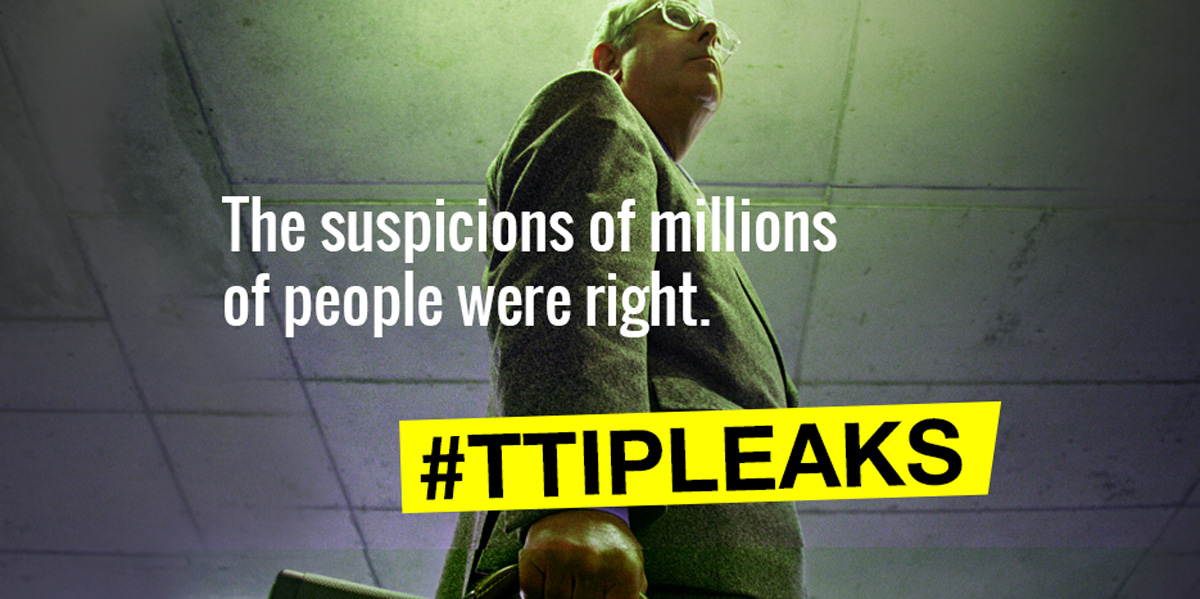
Gabriela Vázquez of the Spain-based group Ecologistas en Acción explains what could happen in the GMO arena, based on the TTIP documents released so far, if the trade deal passes
Recently Greenpeace Netherlands published a series of leaked documents regarding negotiations around TTIP (an international trade agreement between the US and the EU), which have been dubbed “TTIP leaks”. These documents deal with different topics and confirm many suspicions that people have had since the negotiations started amid a considerable aura of secrecy.
Some general guidelines that can be extracted from these documents, as Greenpeace states, are:
• Long standing environmental protection is dropped, since the “General Exceptions Rule”, enshrined in the GATT agreement of the World Trade Organisation (WTO), is absent from the text. This nearly 70-year-old rule allows nations to restrict trade “to protect human, animal and plant life or health", or for "the conservation of exhaustible natural resources”.
• Climate protection will be harder under TTIP: nothing about climate protection can be found in the leaked texts, and mitigation measures will be limited by what is described in the TTIP documents on regulatory cooperation measures or market access for industrial products.
• The precautionary principle is forgotten: It is not mentioned once in any of the 12 leaked chapters. However, several chapters consider the US delegation’s demand for a “risk-based” approach, which aims to manage dangerous substances, instead of avoiding them.
• Open door for corporate lobbying: The leaked documents suggest that both parties consider giving corporations much wider access and participation in decision making.
A clear line can be traced between any of these points and their implications for the GMO issue, but for the moment I’m focusing on the section where this topic is dealt with specifically.
GMOs are not mentioned in the agriculture document, but in the sanitary and phytosanitary measures one. Article X.12 is called “Regulatory Approvals for Products of Modern Agricultural Technology”, and has been proposed by the US. This Article does not contain any notes or comments from the EU.
The first four sections describe the Parties’ obligation to publish the required procedures for evaluating new GMOs in their territory, as well as the timelines for authorisations. Given that the European legislation is more restrictive than the American one, this seems to be aimed at avoiding long delays for the EU authorisation of GMO events submitted by US companies.
However, the required procedures are already public, and timelines are not established a priori because the European political process is complex and may require inputs from different authorities, which need periods of time that cannot be predicted.
Section 5 indicates that if regulations change, a time lapse will need to be given for the solicitants “to adapt” before this change is implemented. However, if the change benefits the solicitants, it must be implemented as soon as possible. This may seem like common sense in principle, but it can have unappealing consequences. For instance, if certain GMO events tolerant to a certain herbicide are in the pipeline, and the EU decides that new data about this herbicide’s impacts require new assessments to be made (or certain varieties not to be imported), this new decision may not apply to the events already in the pipeline.
Section 7 states that both Parties will have to participate in the Global Low Level Presence Initiative. This deals with the presence of traces in imported commodities of GMOs that have been approved in one country but not in the other.
Let's say that Brazil (with less restrictive requirements than the EU regarding GMOs) approves a GMO that is not authorised in the EU. A shipment containing another variety gets contaminated (during cultivation, processing or transportation) with this unauthorised GMO, so the shipment arriving in the EU contains traces of a GMO not authorised to be imported. According to the Global Low Level Presence Initiative, the EU would have to accept this shipment, contaminated with a GMO that has not passed its authorisation procedures, and which would enter the food supply.
It would be especially worrying if these unauthorised events started propagating involuntarily in the destination country. This has already happened in Switzerland, where unauthorised GMO oilseed rape events entered through a contaminated Canadian wheat shipment, fell off the trucks, and started growing at the sides of roads, without having passed any kind of environmental assessment. This kind of contamination, which was initially deemed “impossible”, are now presented as something “unavoidable” that countries will have to accept for the sake of a better business cooperation.
Section 8 describes the establishment of a “working group” on agricultural biotechnology products, including representatives of each Party's trade agency. One of the expected issues to be dealt with is GMO regulation on both sides, so it can be predicted that the US will influence European regulation. We have already seen how US delegations have tried to influence the EU regarding new GMOs (an issue apparently not mentioned in the leaked documents), so we can expect the new working group to follow this trend.
This last section, Section 8, seems to point in the direction of “Regulatory Cooperation”. Regulatory Cooperation is a mechanism that tries to hinder the development of new regulations and would continue to promote the convergence process even after the TTIP was approved. It includes a bigger presence of big industrial sectors in decision-making processes, and the establishment of “early alert systems” to assess how governments' decisions (for instance, enacting new regulations to protect health or the environment) will affect trade.
Generally, as everybody feared, one of the consequences of this deal for the European Union will be the lowering of our public health and environmental standards, at a time when we need them more than ever.
The Spanish original of this article is here.










